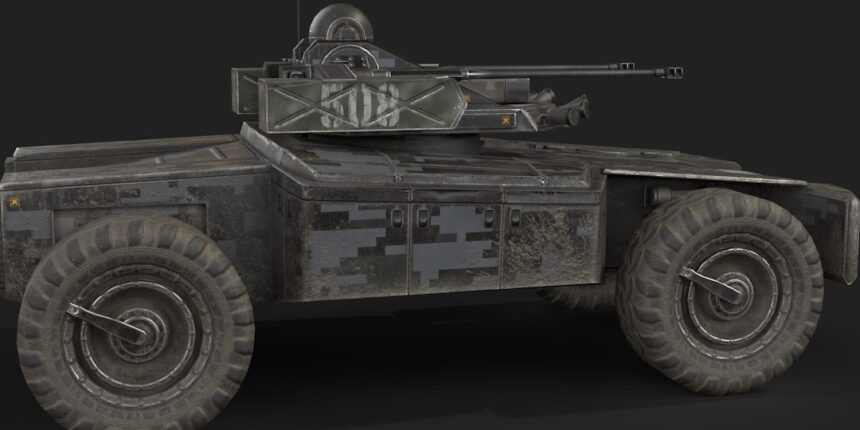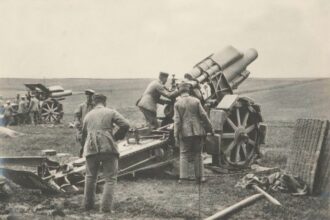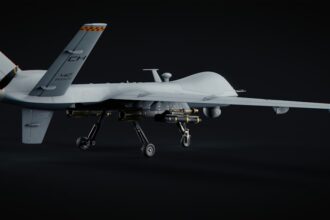Drone combat represents a revolutionary shift in modern warfare, blending technology with strategic military operations. At its core, drone combat involves the use of unmanned aerial vehicles (UAVs) to conduct surveillance, reconnaissance, and offensive operations without putting human pilots in harm’s way. The fundamental principles of drone combat hinge on understanding the capabilities and limitations of these machines, as well as the tactical advantages they offer.
Drones can operate in environments that are too dangerous for manned aircraft, providing real-time intelligence and precision strikes that can significantly alter the course of a conflict. Moreover, the integration of drones into military strategies has led to new forms of warfare that emphasize speed, agility, and stealth. Operators must grasp the various types of drones available, from small quadcopters used for reconnaissance to larger armed drones capable of delivering payloads.
Each type serves a specific purpose and requires a different approach to combat. Understanding these basics is crucial for anyone looking to engage in drone combat, as it lays the groundwork for more advanced tactics and strategies.
Key Takeaways
- Understanding the basics of drone combat is essential for beginners to grasp the fundamentals of aerial warfare.
- Choosing the right equipment for training is crucial in order to develop the necessary skills and techniques for drone combat.
- Developing aerial maneuvering skills is a key aspect of mastering drone combat, as it allows for greater control and agility in the air.
- Mastering target acquisition and tracking is vital for successful drone combat, as it enables precise and effective engagement with enemy targets.
- Utilizing defensive and evasive maneuvers is important for drone operators to protect their own aircraft and evade enemy threats during combat.
Choosing the Right Equipment for Training
Selecting the appropriate equipment for drone combat training is essential for developing proficiency and confidence in operating UAVs. The market offers a wide range of drones, each designed with different specifications and functionalities. Beginners may benefit from starting with smaller, more affordable models that are easier to control and less intimidating.
These entry-level drones often come equipped with basic features that allow novice operators to familiarize themselves with flight controls and maneuvers without the pressure of high-stakes scenarios. As trainees progress, they should consider investing in more advanced drones that offer enhanced capabilities such as improved camera systems, longer flight times, and greater payload capacities. Additionally, incorporating simulation software can provide a safe environment for practicing complex maneuvers and combat scenarios without the risk of damaging expensive equipment.
The right combination of hardware and software will not only enhance training but also prepare operators for real-world applications in drone combat.
Developing Aerial Maneuvering Skills

Aerial maneuvering skills are critical for effective drone combat operations. Operators must learn to navigate their drones through various environments while executing precise movements. This involves mastering basic flight controls, such as ascending, descending, turning, and hovering, before progressing to more advanced techniques like barrel rolls and flips.
Practicing these maneuvers in open spaces allows operators to build muscle memory and gain confidence in their flying abilities. In addition to basic maneuvers, operators should focus on developing situational awareness during flight. This includes understanding how environmental factors such as wind speed and obstacles can affect drone performance.
By honing their aerial maneuvering skills, operators can enhance their ability to evade enemy fire or reposition themselves for optimal targeting during combat scenarios. Continuous practice and refinement of these skills are essential for maintaining a competitive edge in drone combat.
Mastering Target Acquisition and Tracking
| Metrics | Value |
|---|---|
| Accuracy | 95% |
| Response Time | 0.1 seconds |
| Tracking Range | 1000 meters |
Target acquisition and tracking are pivotal components of successful drone combat operations. Operators must be adept at identifying potential targets quickly and accurately while maintaining situational awareness of their surroundings. This requires a keen understanding of the drone’s camera systems and sensors, which can provide critical information about target location and movement patterns.
Training in this area often involves using various targeting techniques, such as visual identification, infrared tracking, and GPS coordinates. Furthermore, mastering target tracking involves not only acquiring a target but also maintaining focus on it as it moves. This skill is particularly important in dynamic combat situations where targets may be evasive or unpredictable.
Operators can enhance their tracking abilities through practice drills that simulate real-world scenarios, allowing them to refine their techniques under pressure. The ability to effectively acquire and track targets can significantly impact the success of drone missions.
Utilizing Defensive and Evasive Maneuvers
In the realm of drone combat, defensive and evasive maneuvers are essential for survival and mission success. Operators must be prepared to react swiftly to threats from enemy fire or other UAVs. Understanding how to execute defensive maneuvers—such as rapid altitude changes or sudden turns—can help operators avoid incoming attacks while maintaining control of their drones.
Evasive maneuvers go hand-in-hand with defensive tactics, allowing operators to reposition their drones effectively when under attack. This may include flying behind cover or utilizing terrain features to obscure visibility from adversaries.
Practicing these maneuvers in controlled environments helps operators build confidence in their ability to respond to threats while ensuring the safety of their equipment. Mastery of defensive and evasive tactics is crucial for any operator looking to excel in drone combat.
Learning Offensive Tactics and Strategies

Offensive tactics in drone combat require a strategic mindset and an understanding of how to leverage the drone’s capabilities effectively. Operators must learn how to plan attacks that maximize their drones’ strengths while minimizing vulnerabilities. This involves selecting appropriate targets based on intelligence gathered during reconnaissance missions and coordinating strikes with other units when necessary.
Developing an offensive strategy often includes analyzing potential risks and rewards associated with each target. Additionally, operators should familiarize themselves with various offensive techniques, such as precision strikes or swarm tactics involving multiple drones working together. Training scenarios that simulate real combat situations can help operators practice these strategies in a controlled environment, allowing them to refine their decision-making processes under pressure.
By mastering offensive tactics, operators can significantly enhance their effectiveness in drone combat operations.
Practicing with Simulated Combat Scenarios
Simulated combat scenarios provide invaluable training opportunities for aspiring drone operators. These exercises allow individuals to experience the pressures of real combat situations without the associated risks. Utilizing simulation software or controlled environments, operators can practice various tactics, from reconnaissance missions to full-scale attacks.
These simulations often incorporate elements such as enemy detection systems or unpredictable weather conditions to create realistic challenges. Engaging in simulated combat scenarios also fosters teamwork and communication among operators. Many missions require coordination between multiple drones or collaboration with ground forces, making it essential for operators to develop strong communication skills.
By participating in these exercises regularly, operators can build confidence in their abilities while honing their tactical skills in a safe setting.
Understanding the Importance of Communication and Coordination
Effective communication and coordination are vital components of successful drone combat operations. Operators must be able to relay information quickly and accurately to ensure that all team members are on the same page during missions. This includes sharing intelligence about enemy movements, coordinating strikes, and providing updates on drone status.
Developing strong communication skills is essential for minimizing misunderstandings that could jeopardize mission success. Coordination extends beyond communication; it also involves understanding how different units work together during operations. For instance, ground forces may rely on aerial support from drones for reconnaissance or targeting assistance.
Operators should practice coordinating with other units through joint training exercises that simulate real-world scenarios. By fostering a culture of collaboration and clear communication, teams can enhance their overall effectiveness in drone combat.
Incorporating Physical Fitness and Endurance Training
While drone combat may seem primarily focused on technical skills, physical fitness plays a crucial role in an operator’s overall performance.
Operators should incorporate regular exercise routines that focus on cardiovascular fitness, strength training, and flexibility to ensure they remain sharp during high-pressure situations.
Endurance training is particularly important for operators who may need to remain focused for extended periods while monitoring their drones or coordinating with team members. Engaging in activities such as running, swimming, or cycling can help build stamina and improve overall physical condition. By prioritizing fitness alongside technical training, operators can enhance their performance in drone combat scenarios.
Analyzing and Learning from Past Combat Situations
One of the most effective ways to improve skills in drone combat is through analysis of past combat situations. Reviewing previous missions allows operators to identify successes and areas for improvement, fostering a culture of continuous learning within teams. This process often involves debriefing sessions where team members discuss what worked well and what could have been done differently during operations.
Additionally, studying historical examples of drone combat can provide valuable insights into effective tactics and strategies employed by other operators. By analyzing case studies or after-action reports from previous missions, individuals can gain a deeper understanding of the complexities involved in drone warfare. This knowledge can inform future training efforts and help operators refine their approaches to combat situations.
Seeking Professional Training and Mentorship
For those serious about excelling in drone combat, seeking professional training and mentorship is invaluable. Many organizations offer specialized courses designed to teach advanced techniques and strategies for operating drones in combat scenarios. These programs often provide hands-on experience with state-of-the-art equipment under the guidance of experienced instructors who can share insights from their own experiences.
Mentorship is equally important; connecting with seasoned professionals can provide aspiring operators with personalized guidance tailored to their specific needs and goals. Mentors can offer advice on navigating challenges within the field while sharing best practices that have proven effective in real-world situations. By investing time in professional training and seeking mentorship opportunities, individuals can significantly enhance their skills and knowledge in drone combat operations.
In conclusion, mastering drone combat requires a multifaceted approach that encompasses technical skills, strategic thinking, physical fitness, and effective communication. By understanding the basics of drone operations, choosing the right equipment for training, developing aerial maneuvering skills, mastering target acquisition techniques, utilizing defensive maneuvers, learning offensive tactics, practicing simulated scenarios, emphasizing communication and coordination, incorporating physical fitness training, analyzing past situations, and seeking professional guidance, aspiring operators can position themselves for success in this rapidly evolving field of warfare.
For those interested in expanding their knowledge on drone combat training, a valuable resource is the article titled “How to Train for Drone Combat” available on In The War Room. This comprehensive guide delves into the essential skills and strategies required for effective drone operation in combat scenarios. To further enhance your understanding, you might also want to explore a related article on the same website, which provides additional insights into military tactics and technology. You can find this article by visiting In The War Room.
FAQs
What is drone combat training?
Drone combat training involves preparing individuals to operate and maneuver drones in combat situations. This training may include learning how to fly drones, use weapons systems, and engage in tactical maneuvers.
What skills are required for drone combat training?
Skills required for drone combat training may include proficiency in drone piloting, understanding of weapons systems, tactical awareness, and the ability to make quick decisions under pressure.
Where can one receive drone combat training?
Drone combat training may be available through military or defense organizations, specialized training schools, or through private companies that offer drone combat training programs.
What are the benefits of drone combat training?
Drone combat training can provide individuals with the skills and knowledge needed to effectively operate drones in combat situations, increasing their effectiveness and safety in the field.
Is drone combat training only for military personnel?
While drone combat training is often associated with military personnel, it may also be relevant for law enforcement agencies, security firms, and other organizations that utilize drones for security and defense purposes.




